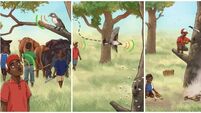Clapper bridges and stones with healing powers — stories of our ancestors, hidden in the Irish landscape
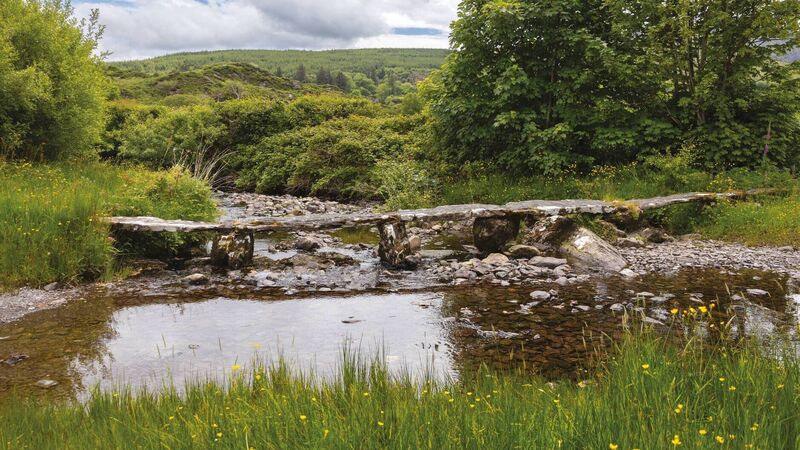
Clapper Bridge, known locally as Ros a’Locha Stepping Stones, County Cork, was the first bridge erected across this river (Abha na Sróine) Featured in Remnants of Our Past by Deirdre O'Neill
During lockdown while out on a walk, Deirdre O'Neill noticed metal rings on the wall of a church in Porterstown, County Dublin. She took a photo, posted to her Instagram and didn’t give it another thought. The next morning she was surprised by the huge reaction to her post. From then, she started looking out for these artefacts from our history, which we walk past every day without noticing. As lockdown eased and ended she went further afield and the account continued to grow and grow as Deirdre noticed more and more artefacts and researched their history. Today the account has more than 232,000 followers. The book expands on this project, and includes an artefact from nearly every county in the country. Deirdre uses these remnants to explore how people in Ireland ran their households, farmed, fished, entertained themselves, and honoured their dead.
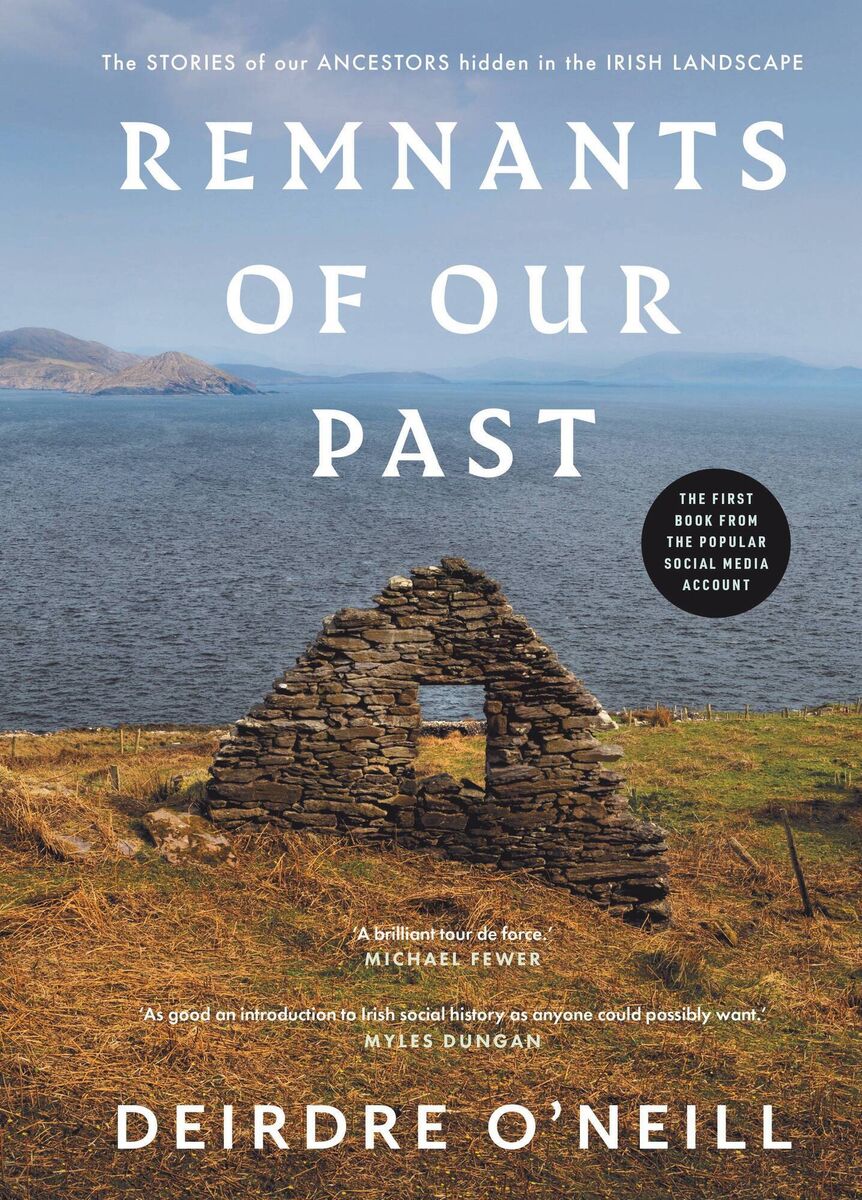
- These are extracts from (Gill) by Deirdre O'Neill which is out now.
Narrow stone bridges, only as wide as a person, can be found dotted around our landscape. Known as clapper bridges, some could date as far back as the 13th century, built as part of Christian abbey complexes to enable the monks to bring their grain to be ground at their mill. Some were built as recently as the mid-19th century.
The name clapper may originate from the Latin claperius, which means a pile of stones. Flat slabs of stone of various sizes, some over two metres long and weighing up to a tonne, were laid across upright stones or piers.
They may appear simple, but clapper bridges that cross wider stretches of water in particular demonstrate the ingenuity of their builders. They are curved horizontally based on the principle of the arch, so the stones are pushed tighter by the force of the water, thus strengthening the bridge.
In some cases little islands were built alongside to prevent the bridge being eroded by the water.
While clapper bridges were invaluable to the local community, enabling people to cross rivers safely, with their donkeys and carts crossing alongside in the water, their humble nature meant that there aren’t records of them before 19th-century maps, where they are denoted as a foot stick or foot bridge.
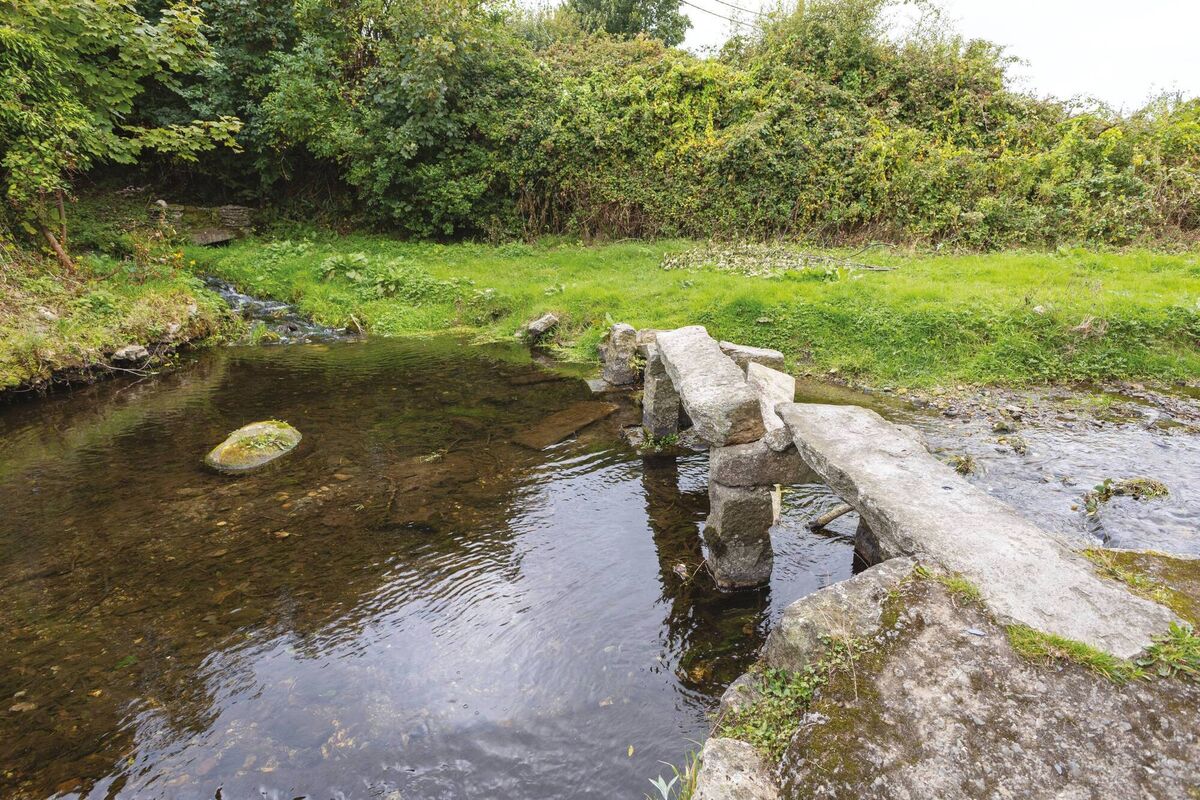
Locals often call them stepping stones, likely a tradition that has carried down through the years from when they replaced earlier stepping stones. These could be quite restrictive; for example, people wanting to cross the stepping stones (predating the early 19th-century stone road bridge) linking Foaty Island (now Fota Island) to the mainland could not cross at high tide and had to wait for low tide for their horses to be able to cross safely.
Another early type of bridge that could be used for walking animals over without entering the water was the packhorse bridge. A packhorse is a horse or donkey used to carry loads across its back, so these bridges were the width needed to fit a horse or donkey loaded with panniers. They traditionally had low or no sides for the same reason.
Belief in the curative power of stones was part of everyday life in Ireland.
Children who had warts would put as many pebbles as they had warts in a bag and leave it at the crossroads, the place where a passerby was most likely to pick it up, in the belief that the stones would transfer the warts to the person who found them.
Or if a person had a pain in their side, it would disappear if they bent down to lift up a stone, spat under it, and left it down again in the same position.
Stones would be taken from the walls of old church ruins and brought home, in the belief that they could cure aches and pains.
Then there are the sacred stones at special sites, from simple holed stones to stone tables and stone seats. People believed their curative properties derived from their unique origins, whether supernatural events, the coming of Christianity, an Irish legend or just because they had an unusual shape.
The large hole in Cloch an Phoill (meaning the ‘hole stone’) gave rise to a tradition of passing infants through it to cure them of rickets. The granite stone is thought to have originally been set in place in the early Bronze Age (up to 3,000 years ago) to mark a burial.
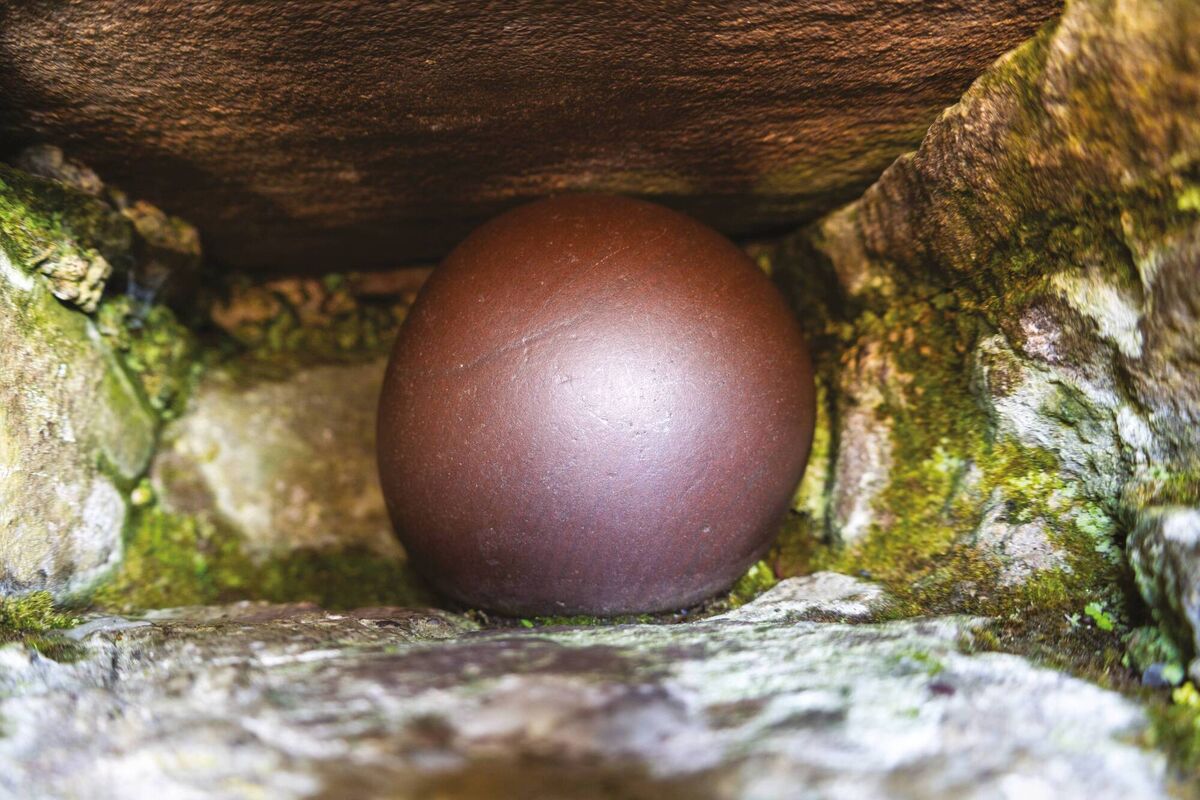
Some think the purpose of the hole was for people to pass food to their loved one in the other world.
Tradition records that the stone is associated with the High Kings of Ireland; it is where Niall of the Nine Hostages, the 5th-century ancestor of the Uí Néill Kings of Tara, tied up his enemy, Eochu, by running a chain through the hole. Eochu broke free, leaving marks on the stone, killed the nine warriors Niall had sent to kill him, and eventually killed Niall.
In Kerry, it is believed that when St Feaghna caught a dairymaid stealing, he turned her and her dairy to stone (now known as the Petrified Dairy). The five basin-like hollows are supposed to be keelers (bowl-shaped milk coolers) and her butter is the oval stones (the form that butter used to be shaped into).
Her dasher (long-handled paddle) and churn were also turned into stone.
The churn’s lid was found in the field in later times and placed back onto the stone. (This lid is the quern in the centre of the stone that was found in the 19th century.) The dairymaid herself tried to escape but he turned her into a human-sized standing stone, with a hawthorn growing beside her, about midway up the opposite hillside.
It was believed impossible to remove the stones from the ‘dairy’. A young shop boy tried this, but his horse refused to let him ride away.
Due to local superstition the same stones have remained in place for thousands of years. They show signs of wear and it was thought the rock may have been used for domestic purposes (for example grinding) before a sacred use was attached to it, first pagan and then Christian. In more recent centuries, it was one of the stations of the rounds at this site.
Pilgrims would seek a cure for warts by circling the rock seven times in an anti-clockwise direction, reciting a Pater and an Ave at each of the ‘butter rolls’, and making the sign of the cross on the warts with the water from the rock. Others believed the stones were turned to put curses on people.
Then there are the stones whose stories tell of special qualities derived from the coming of Christianity. Embedded in the wall in Fenloe Graveyard, County Clare, there is a plague stone said to have been blessed by the 6th century St Luchtigern to cure people with cholera. Those afflicted would rub their legs on the stone and make the sign of the cross. Later, and even to the present day, pilgrims do the same to seek a cure for swollen joints.






